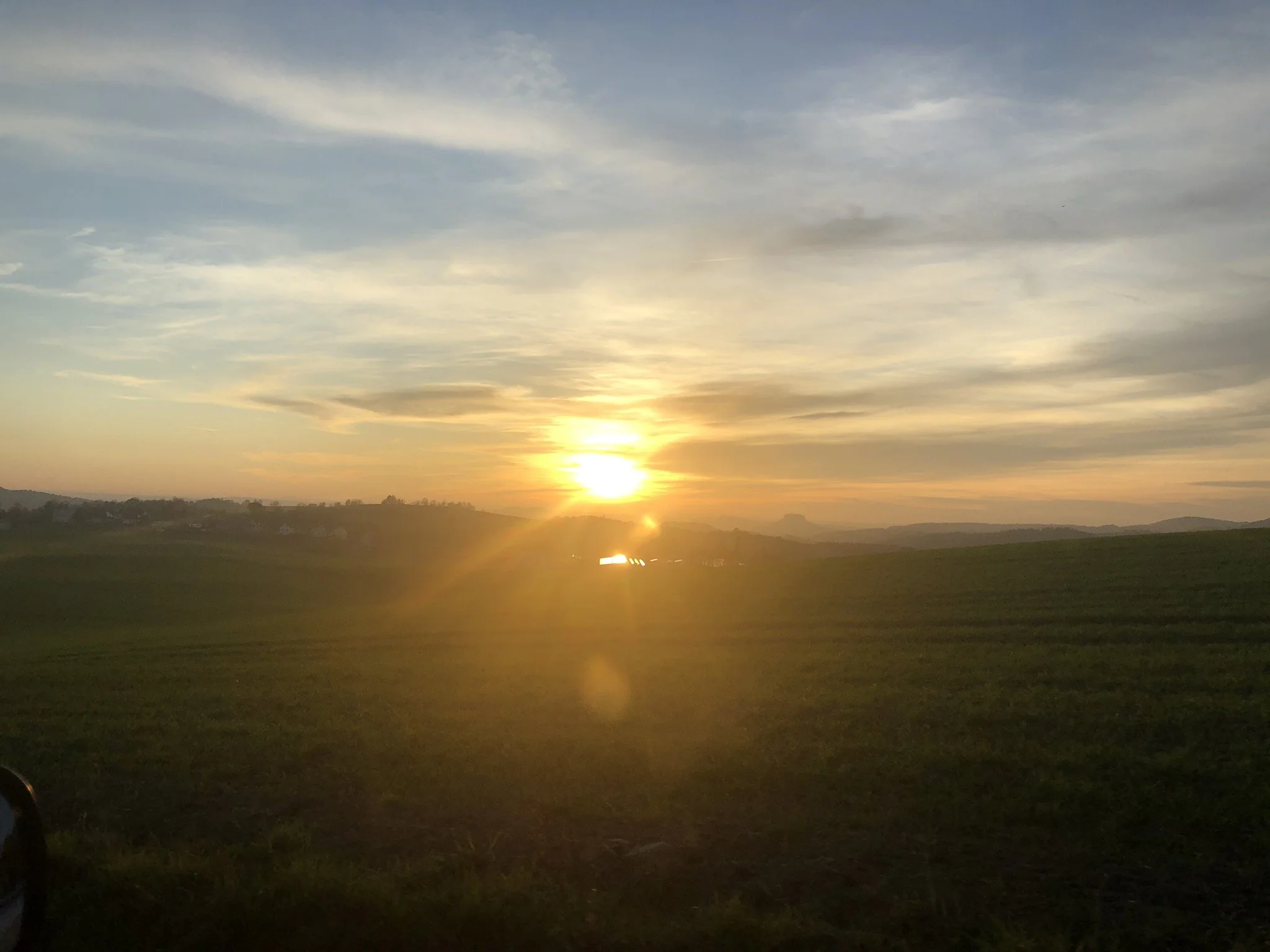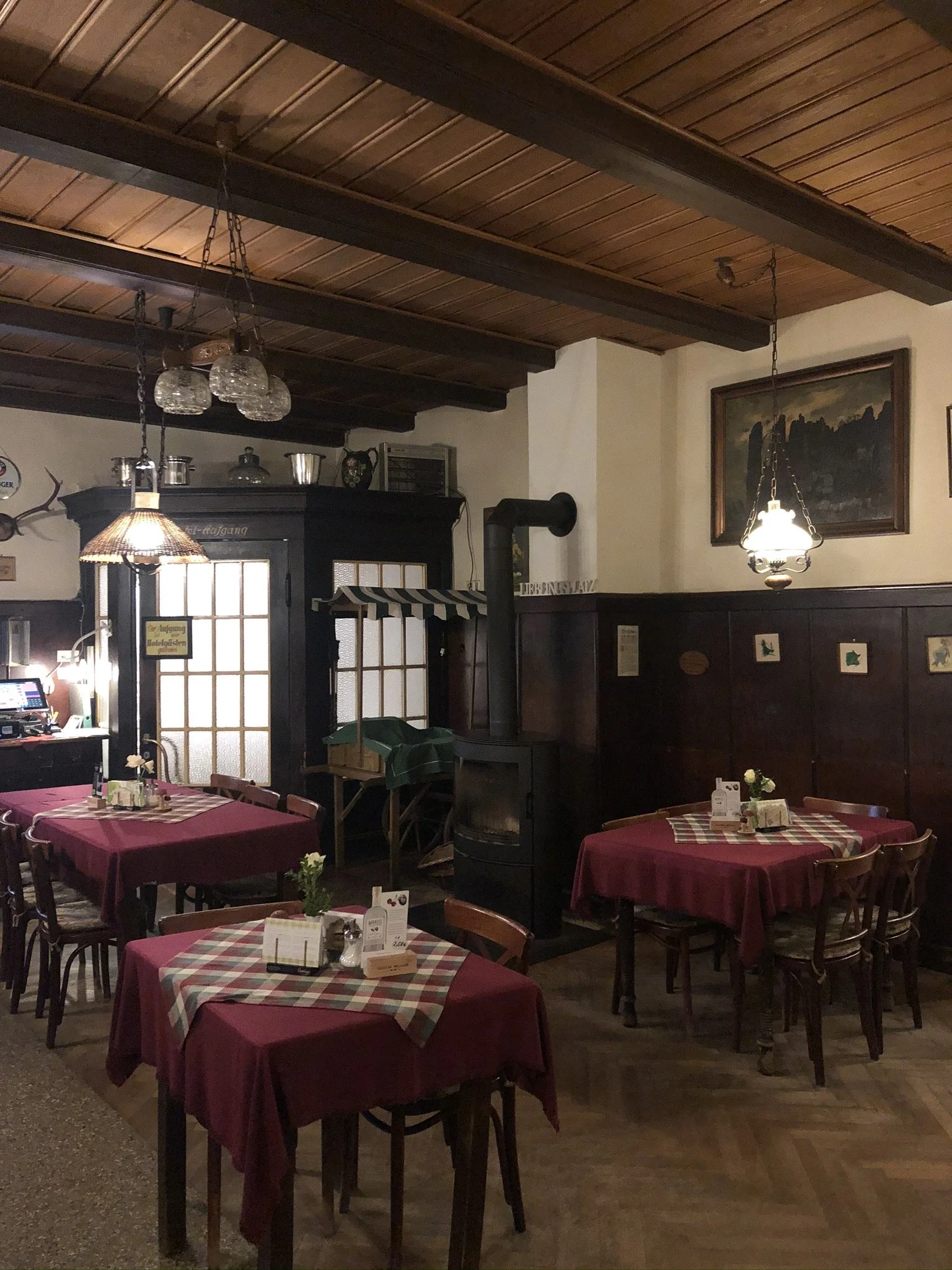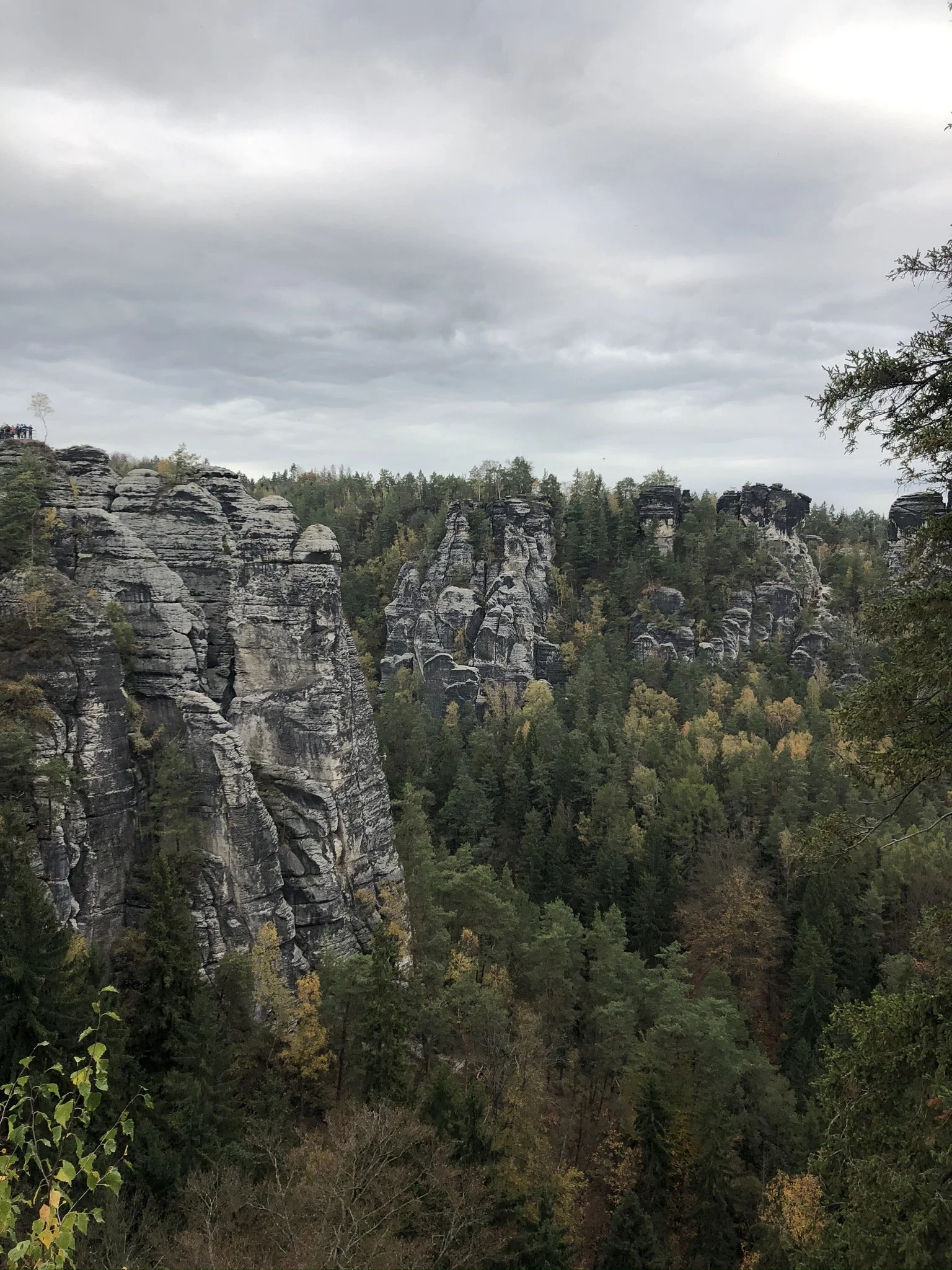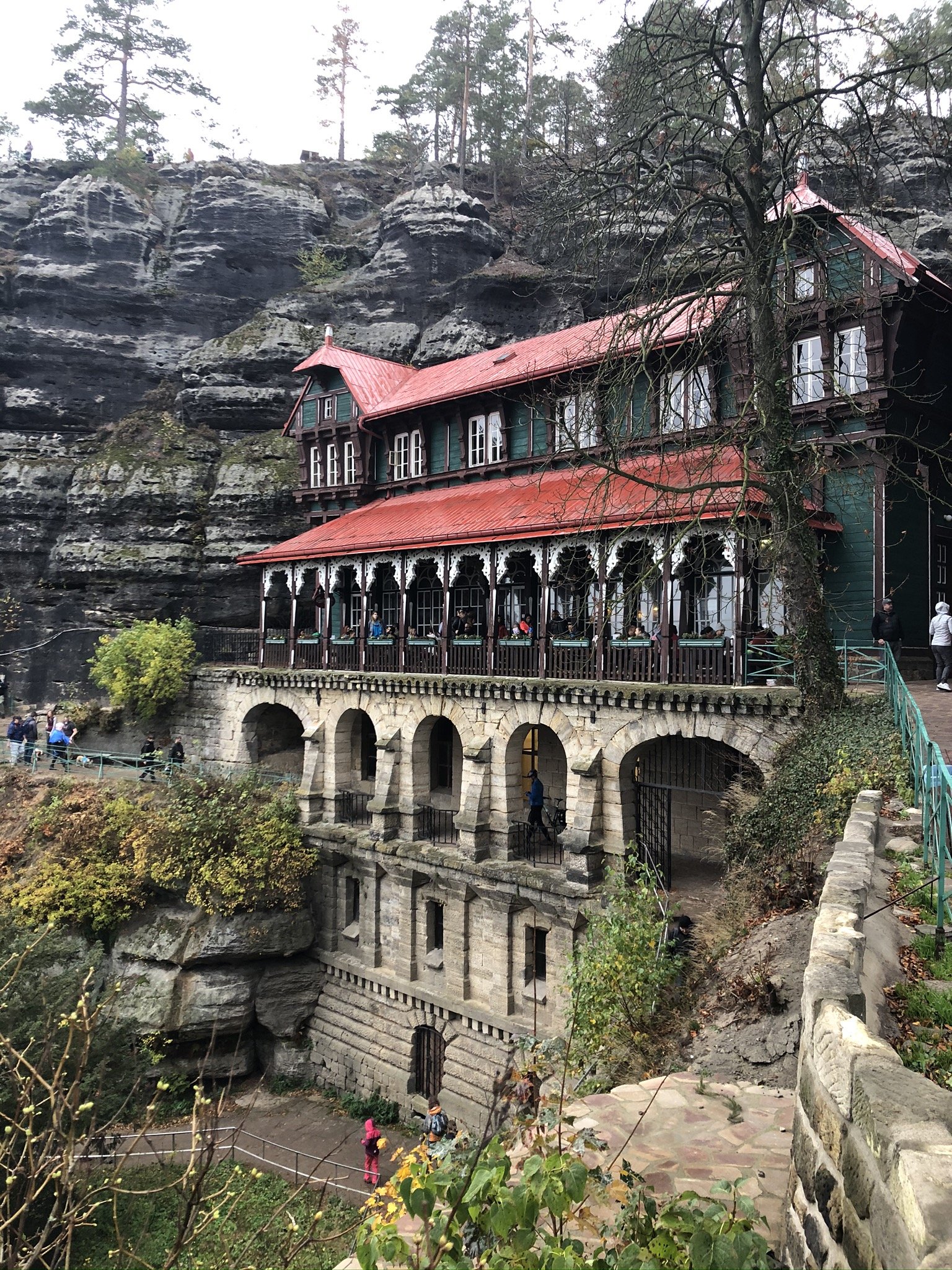Saxon Switzerland National Park
At the end of October 2019, my boyfriend and I took the car for a little road trip to the Swiss National Park. We left Copenhagen in the morning and after a nice ferry ride and a few of hours of driving, we arrived in Bad Schandau, a spa town in Germany, in the south of the Free State of Saxony and on the edge Saxon Switzerland National Park, just in time for a beautiful sunset.
We kept driving around 30 minutes next to the rural tram line, the Kirnitzschtal Tramway which runs alongside the river until arriving at our hotel for the night, the Lichtenhainer Wasserfal. Built in 1852/53 next to the waterfall, this was first a small bar in a bark hut and with a storage facility. After a delicious traditional dinner and a good night of sleep, we woke up the next day ready to hit the road to the Saxon Switzerland National Park, established in 1990.
“After the inn was built, the waterfall complemented it perfectly. The innkeeper felt (and still is today) responsible for the functionality of the waterfall, which proved to be a visitor magnet and attracted numerous guests. Today there are some 400 km (250 mi) of hiking paths, 49.9 km (31.0 mi) of biking paths, and 755 climbing locations with around 12,600 possibilities of climbing routes.”
Our first stop was Bastei Bridge, a rock formation towering 194 meters above the Elbe River. A good thing to know is that you have to park you car on the official parking area, permitted only after having paid a 7€ fee to the tourist information desk and putting an official paper in your car window.
The Bastei Bridge
The hike towards it was very easy and enjoyable, but more and more crowded once you approach the bridge. The view is nevertheless breath-taking. Formed by water erosion over one million years ago, those impressive rocks look almost out of a movie. To help tourists to enjoy the site, a wooden bridge was built in 1824, then replaced in 1851 by the sandstone one you can see today.
In 1819 August von Goethe extolled the views: “Here, from where you see right down to the Elbe from the most rugged rocks, where a short distance away the crags of the Lilienstein, Königstein and Pffafenstein stand scenically together and the eye takes in a sweeping view that can never be described in words.”
There you can also see the ruins of the Neurathian castle, once the largest rock castle in the region. To see this as well as some items, reconstitution and artefacts, an entrance fee of 2€ has to be paid. I think it’s worth it because it also allowed me to see the rocks and the bridge from a less crowded angle.
A few hours in Czech Republic
Mesmerized, we went back in the car towards the other part of the park located in the Czech Republic: the Bohemian Switzerland National Park. After we parked the car on the appropriate parking for 5€, we hiked in the woods under beautiful fall colours for approximately 45 minutes towards Pravčická brána, a narrow rock formation and the largest natural sandstone arch in Europe.
There, you can see the Sokolí Hnízdo hotel built in 1826 but now only able to be visited within the opening hours. You also have a small photo gallery inside the building with great images from different times and seasons of the gate.
Outside, you’re able to walk to some impressive viewpoints and appreciate the landscape fully. Once we’ve done that, I had read on some website that the best place to see the sunset was Mariina skála, for its unique location. It’s a 428 m rocky hill with a wooden refuge built in 1856 on the hilltop.
We decided to drive there but were a little disappointed when we saw how cloudy the sky was and how fast the night was falling. I had forgotten to take into consideration the winter time! Well, It will be for next time, but here are some pictures of what we would have seen.
































